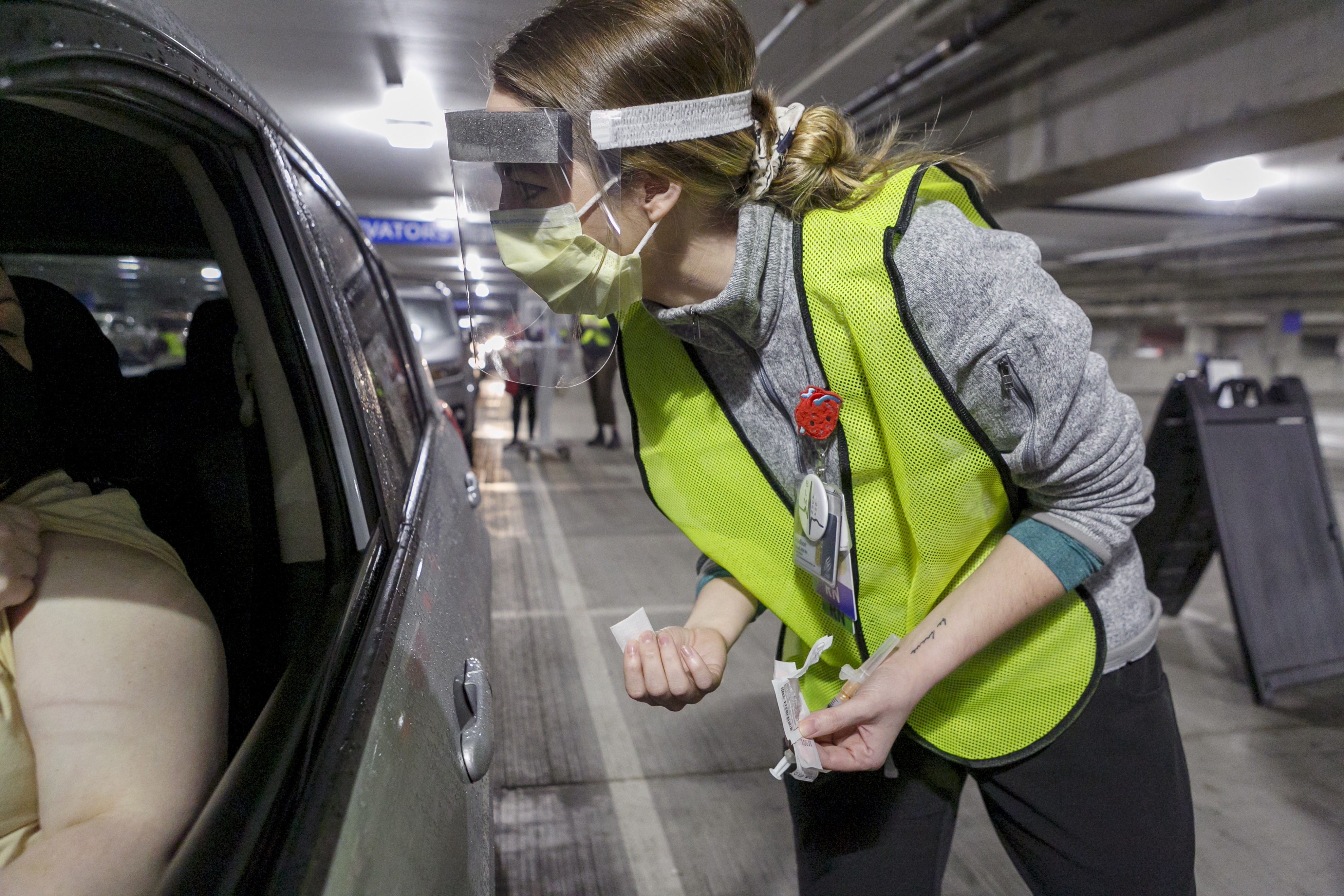
Nurse Madison Freenling prepares to give a COVID-19 vaccine on Sunday, Jan. 10, 2021 in Portland, Ore., at a drive-thru vaccination clinic. The clinic was a partnership between SEIU and Oregon Health & Science University, aiming to vaccinate Oregon's 32,000 home-health care workers and their patients.
Kristyna Wentz-Graff / OPB
Oregon health systems and county public health departments are working to ramp up the number of COVID-19 vaccine doses they administer.
The focus: Getting the vaccine to first responders and health care workers who’ve been passed over or don’t work for a hospital system.
In Portland, Oregon Health & Science University hosted a drive-through clinic over the weekend for more than 2,000 community-health workers, first responders and home care-workers. In Salem, the Marion County Public Health department, Salem Health and the Oregon National Guard are distributing vaccines at the Oregon State Fairgrounds and Expo Center to eligible health workers.
Related: Why Oregon still can’t say when you’ll get the COVID-19 vaccine
OHSU staff administered the vaccine through people’s rolled down car windows. Vaccine recipients were then asked to wait in their cars for 15 to 30 minutes, with people checking in on them periodically and paramedics onsite in case of any allergic reactions.
“It’s been ideal. Very simple, very easy,” said Leslie Fox, 42, a home health worker. Fox cares for her sister, who is severely disabled.

Home health care worker Leslie Fox received her COVID-19 vaccination on Sunday, Jan. 10, 2021 in Portland, Ore., at a drive-thru vaccination clinic.
Kristyna Wentz-Graff / OPB
Fox, who is part of the SEIU Local 503 union for home-care workers, said she provides full care for her sister — similar to what might be available in a nursing home.
She didn’t think she’d be in the first round of people offered the vaccine.
“I don’t work in a facility,” she said. “We aren’t seen a whole lot, so it’s really important for us to be recognized. I’m glad we were.”
There are 32,000 home-care workers in Oregon, according to SEIU.
The executive director of SEIU 503, Melissa Unger, said home-care workers are one example of a group that’s especially vulnerable to COVID-19 but easily left out of a vaccination campaign. They lack a central employer, speak a variety of languages and may not have their own transportation.
“They will get lost in this process,” Unger said. “We need to make sure there is a track that is completely focused on high risk, vulnerable, difficult to reach populations.”
OHSU, meanwhile, said that if the drive-through vaccination clinic model works, it could be scaled up to help distribute the COVID-19 vaccine more rapidly to all Oregonians as the region’s vaccine supply increases.
Last week, Gov. Kate Brown demanded improvements to the rollout process amid complaints Oregon is lagging behind other states and its own expectations. Some hospitals, including OHSU, have been vaccinating employees who do not qualify yet.
Related: Oregon aiming to hit goal of 12,000 COVID-19 vaccines per day, deploying National Guard
The state had been vaccinating around 7,000 people a day; Brown wants that number closer to 12,000.
“We’ve all got to step up as health systems and help find the different ways to reach the communities that need to be vaccinated,” said Joe Ness, chief operating officer for OHSU Health. “I think it’s really comes down to local communities and partnerships within the state, is really how we’re going to get it done now.”
